From Majestic Mountains to Magical Marrakesh: Things To Do in Morocco
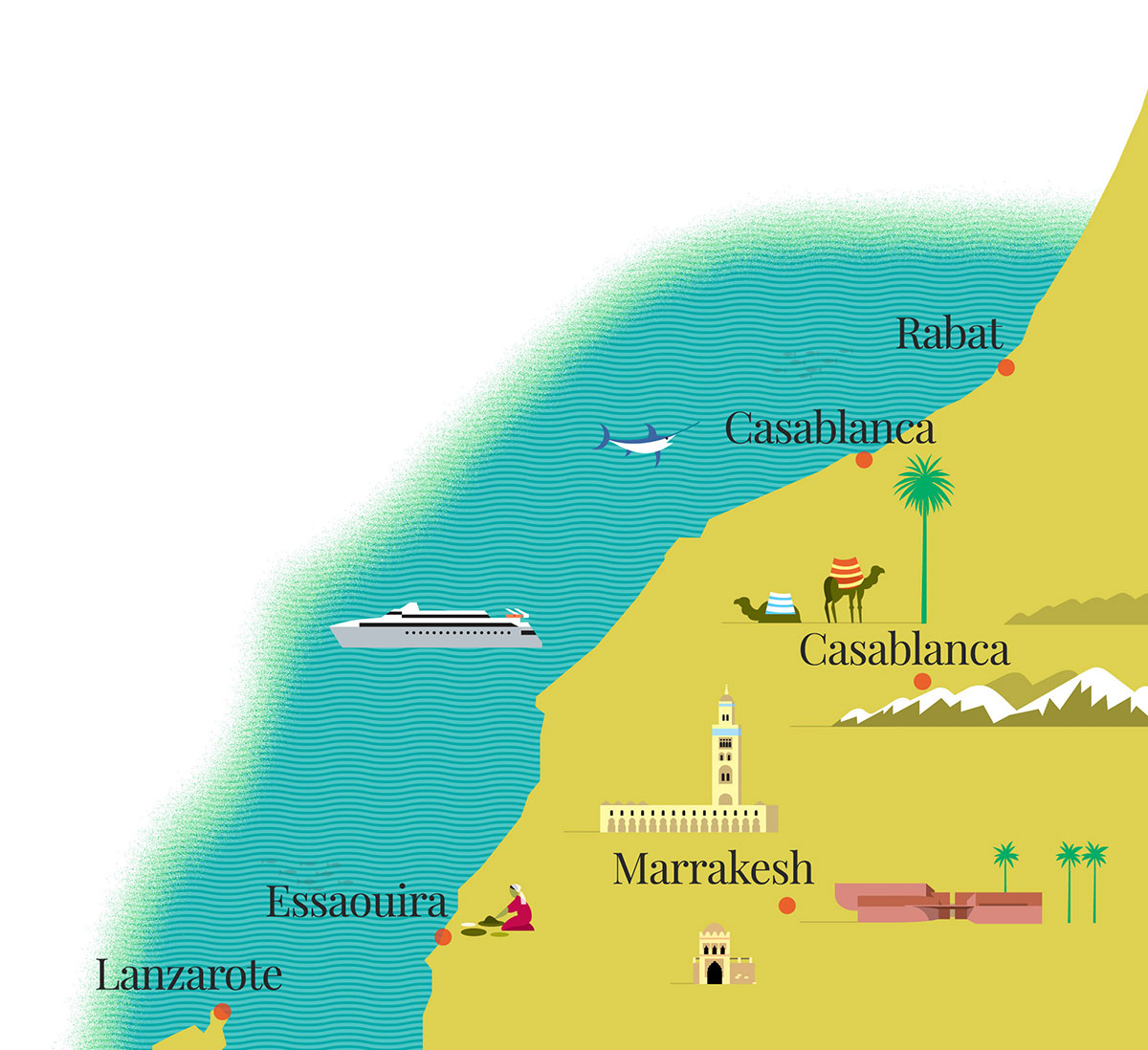
The People of Morocco The Berbers
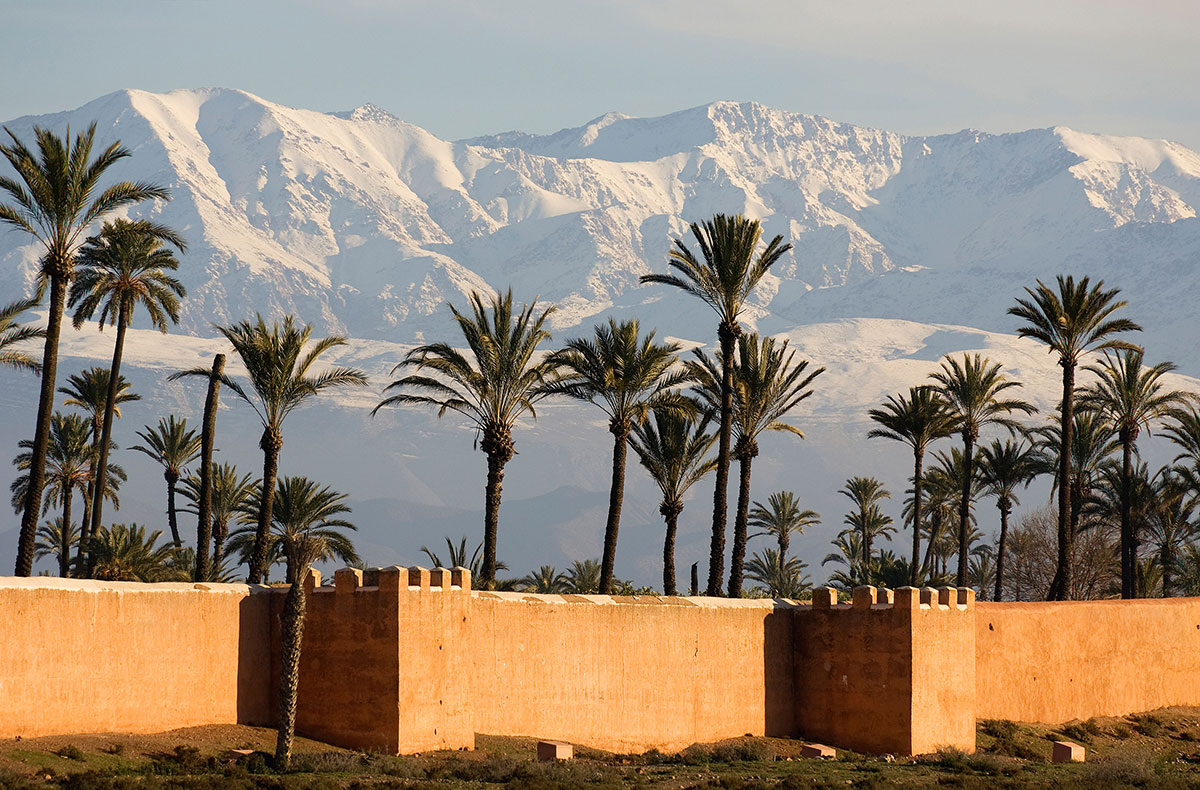
The Atlas mountains make a striking backdrop for the ramparts of Marrakesh
References to the Berbers can be found in Egyptian sources dating from 3,000 BC. For thousands of years, nomadic people have wandered through the mountains and deserts in search of water and food for livestock, its proud heritage now woven into the fabric of Morocco’s culture. While “Berber” derives from the ancient Greek word barbaros (meaning “foreign” or non-Greek), in the Berber language, one of the oldest in the world, they call themselves Imazighen (or “free people”).
Across North Africa and the Sahara, the Berbers number about 36 million, divided into groups by their dialects. In Morocco — named after “Mur N’Akush”, the Berber for “God’s country” — there are 15-20 million, with many of the wider population claiming to be descendants of, or in some way related to, the Berbers.
Over the centuries as nomads, they have encountered Phoenician merchants, the Romans, Vandals, Visigoths and the Byzantines, as well as the Arabs, whose conquest of the Maghreb region of North Africa in the seventh century led to the Islamisation of many Berbers. Today, visitors are most likely to meet them on the slopes of the magnificent Atlas mountain range, which separates the coastlines of the Mediterranean and Atlantic from the Sahara Desert, while also distinguishing the Arab populations of the large urban centres from the Berbers of the desert.
Visitors can also meet them in the green valleys where they survive as farmers. Others continue a semi-nomadic life as merchants crossing the Sahara, heading to the northern cities with their traditional handmade wares, from elaborate silver jewellery and embroidered kaftans to multi-coloured kilim carpets and other rugs adorned with ancient Berber motifs that have survived to the present day.
The Berbers themselves are dressed in vibrant fabrics with an air of stepping out from an ancient past. A smile and a slight inclination of the body are sufficient to indicate respect as they offer hospitality in their homes filled with the scents and flavours from the clay pots boiling in their hearths.
Like the Berbers, Morocco has its own special identity. It occupies the north-western edge of the African continent, known as al-Maghrib al-Aqsa (or the most distant land in the west). Only eight miles from Spain, Morocco has absorbed cultural influences from the Phoenicians and Romans, the Arabs and Africans, the Muslims and Jews, the native Berbers, and the Europeans (Portuguese, Spanish and French) who periodically colonised the country.
Things to do In Morocco
The Magic of Marrakesh
The most important urban centres in Morocco, a French protectorate from 1912 to 1956, are Rabat (the capital), Casablanca, Tangiers, Fez and Marrakesh. If you have to choose only one place to plan your itinerary of things to do in Morocco, we recommend Marrakesh, a city that is both Arab and African. A stop-over point for the caravans that once crossed the desert on their way to Timbuktu and the coasts of North Africa, Marrakesh became rich through the trade in gold, ivory and other exotic products. Winston Churchill discovered this enchanting city, known as the “Paris of the Sahara”, in the 1930s on a painting holiday, while Yves Saint Laurent, who first came here in the 1960s, once stated that he learned about colour in Marrakesh.
The medina, or old town, is a UNESCO World Cultural Heritage site. Every lane in this historic centre hides delights and treasures while its focal point, the Jemaa el Fnaa square (which means “square of the dead” or “place for the gathering of the humble”), pulsates with life day or night. Here you’ll find an array of snake charmers, doctors with herbs and potions, dentists, musicians, magicians, clairvoyants, storytellers, acrobats, bootblacks, beggars, street vendors and water sellers.
This is the best place to observe the amalgam of cultures that make up the city’s character. The square, surrounded by shops and cafés and filled with kiosks, stalls, scents, songs, dance and drums, conjures up thoughts of Arabian tales from One Thousand and One Nights.
The souks, the famous bazaars of Marrakesh, offer a unique experience that takes you back in time. Brightly coloured jellabas, Moroccan handicrafts, rugs, spices and perfumes are all blended together as carts laden with merchandise are pulled by little donkeys, hen coops and working animals for sale add to the hustle and bustle, and outdoor restaurants tempt passers-by while fortune tellers offer to read your future.
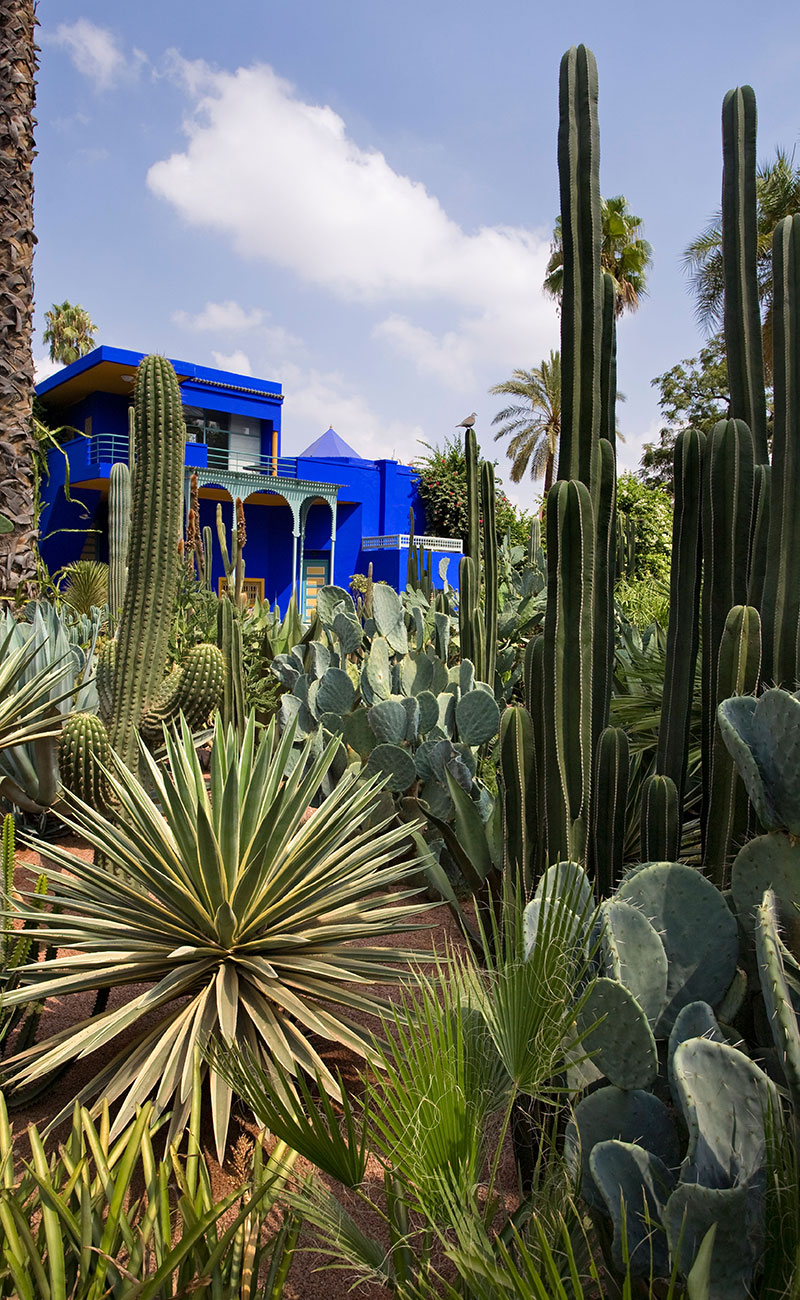
Rare and exotic plants in the Jardin Majorelle.
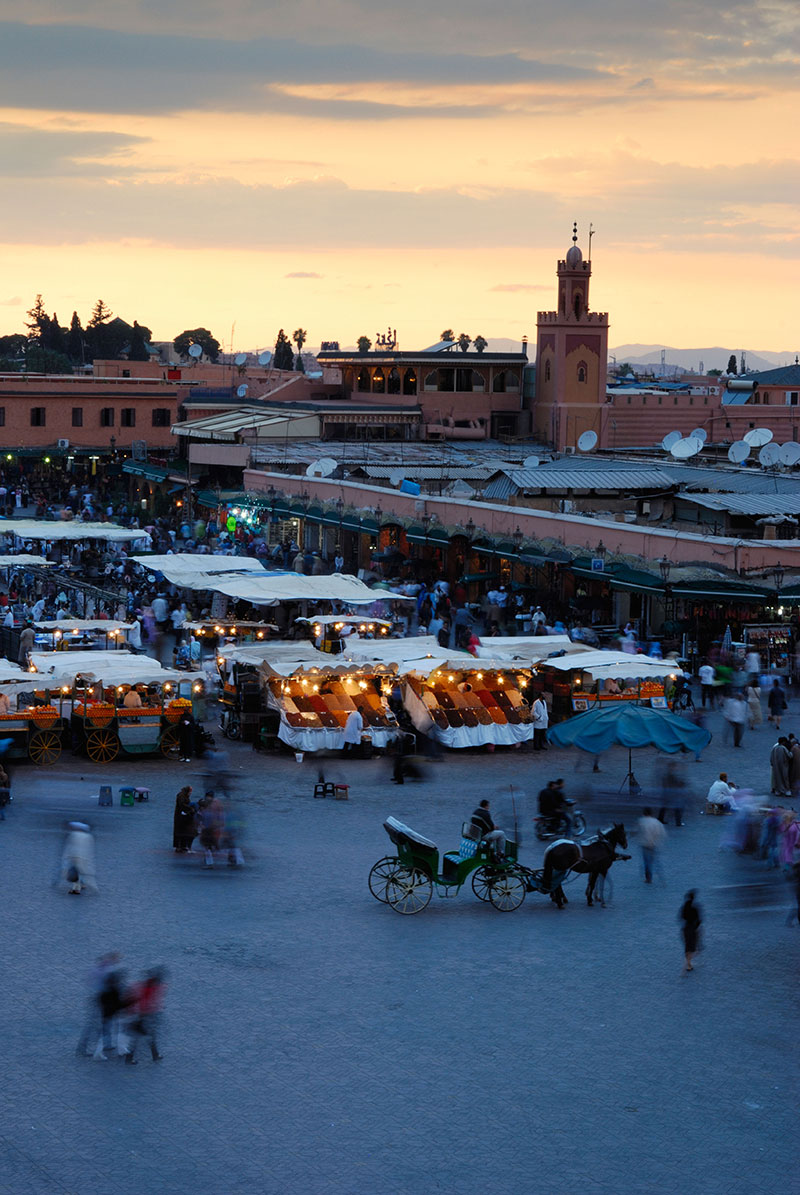
The Jemaa el Fnaa square is the focal point of the city
Equally fascinating are two mausoleums for members of the Saadi Dynasty, which ruled Morocco from 1549 to 1659. The most impressive of them contains the tomb of Sultan Ahmet el Mansour. Marrakesh also boasts the Ben Youssef Madrasa, a 14th-century seminary that was the largest in Morocco, and which is now a museum with a spacious, richly decorated courtyard. And one can’t help but notice on the skyline the 77m-high minaret of the Koutoubia Mosque, while the late 19th-century Bahia Palace, at the north end of Marrakesh’s Jewish quarter, has extensive gardens. Just north of the palace is the beautiful palace-museum Dar Si Said, celebrating Moroccan artisanship over hundreds of years.
For more enchanting things to do in Morocco the Jardin Majorelle Garden is a must-visit, created by French artist Jacques Majorelle, who moved to Morocco in 1917 and spent four decades designing and building a beautiful grove with rare plants in the heart of Marrakesh. In 1966, Yves St Laurent and his partner Pierre Bergé fell in love with it, eventually buying and nurturing the garden and its cobalt blue villa in 1980; they also led the way in attracting wealthy European and American visitors to Marrakesh, which prompted the development of luxury hospitality in the city.
A museum devoted to Yves Saint Laurent opened its doors in October 2017. The 4,000sq m houses a permanent exhibition of his work, as well as a library, auditorium, restaurant and café.
Also not to be missed is the El Badi Palace. Despite being largely in ruins, it still justifies the name (meaning “unrivalled” or “incomparable”) given to it by Sultan Ahmet el Mansour in the late 16th century, especially its large ceremonial courtyard decorated with pools, pavilions and sunken gardens. And equally inviting are the Royal Gardens of the famous hotel La Mamounia with its 700-year-old olive trees and 20 acres of lush grounds.
An Exquisite Stay Riad Kniza
Just inside the medina, and close to the gate of Bab Doukkala, is the five-star Riad Kniza. Dating back to the 18th century, it has been transformed into an opulent retreat by owner Mohammed Bouskri, who has used local artisans and traditional Moorish designs and materials to recreate an authentic Moroccan experience. The hotel offers a traditional hammam, an indoor pool and local gastronomy for guests staying in its 11 exquisite rooms and suites. Breakfast on the rooftop terrace, decorated like a plush Moroccan tent, is a unique experience with the medina at your feet.
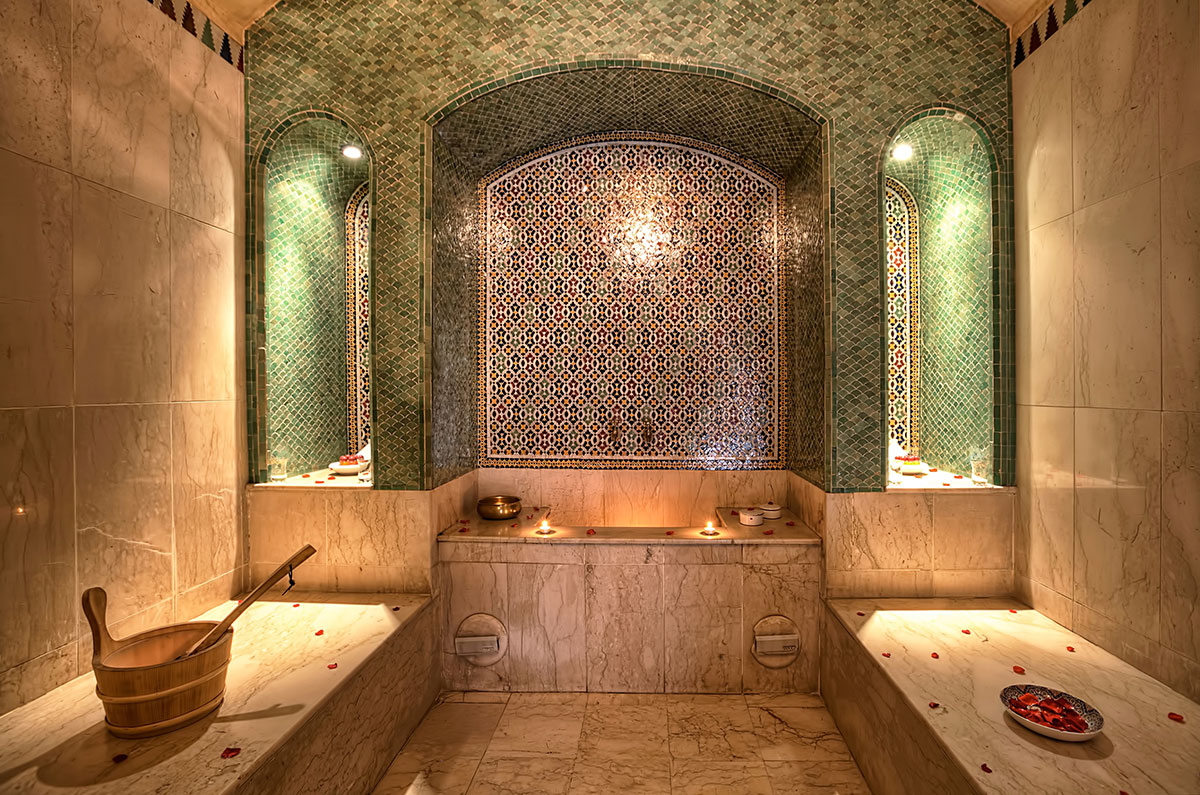
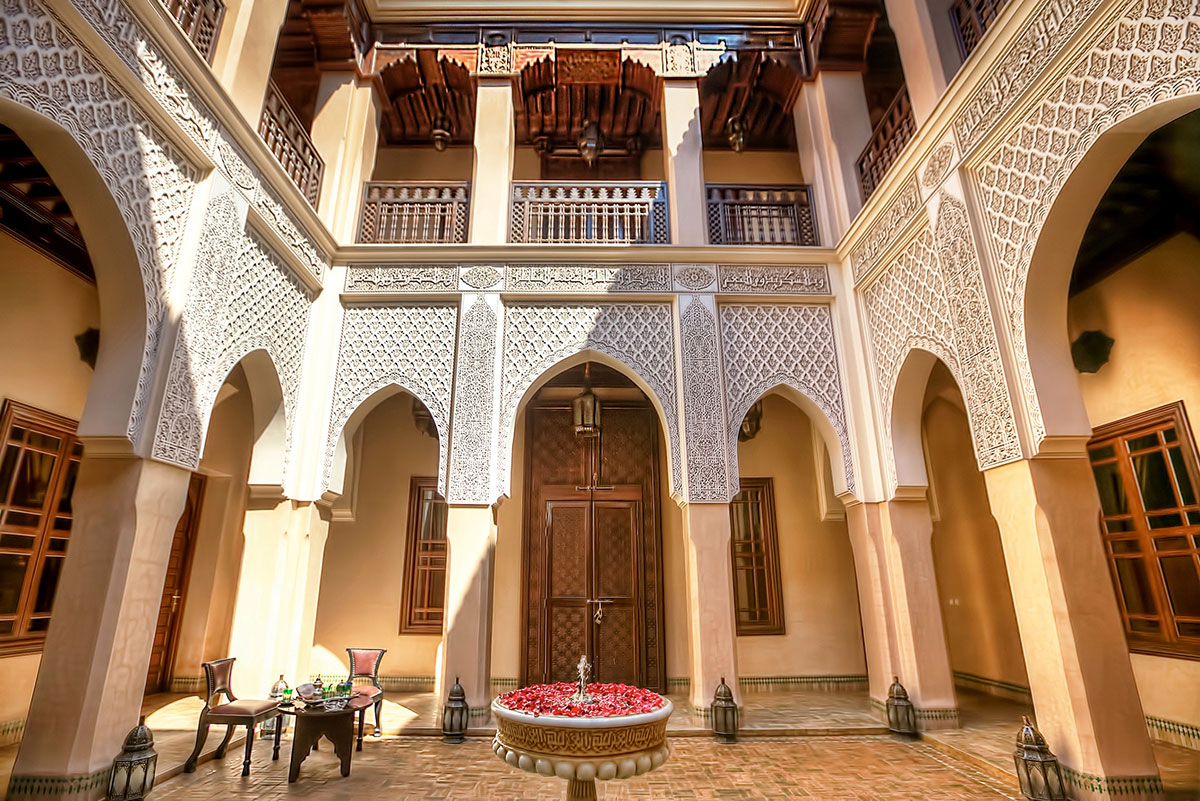
The stunning architecture of the Riad Kniza
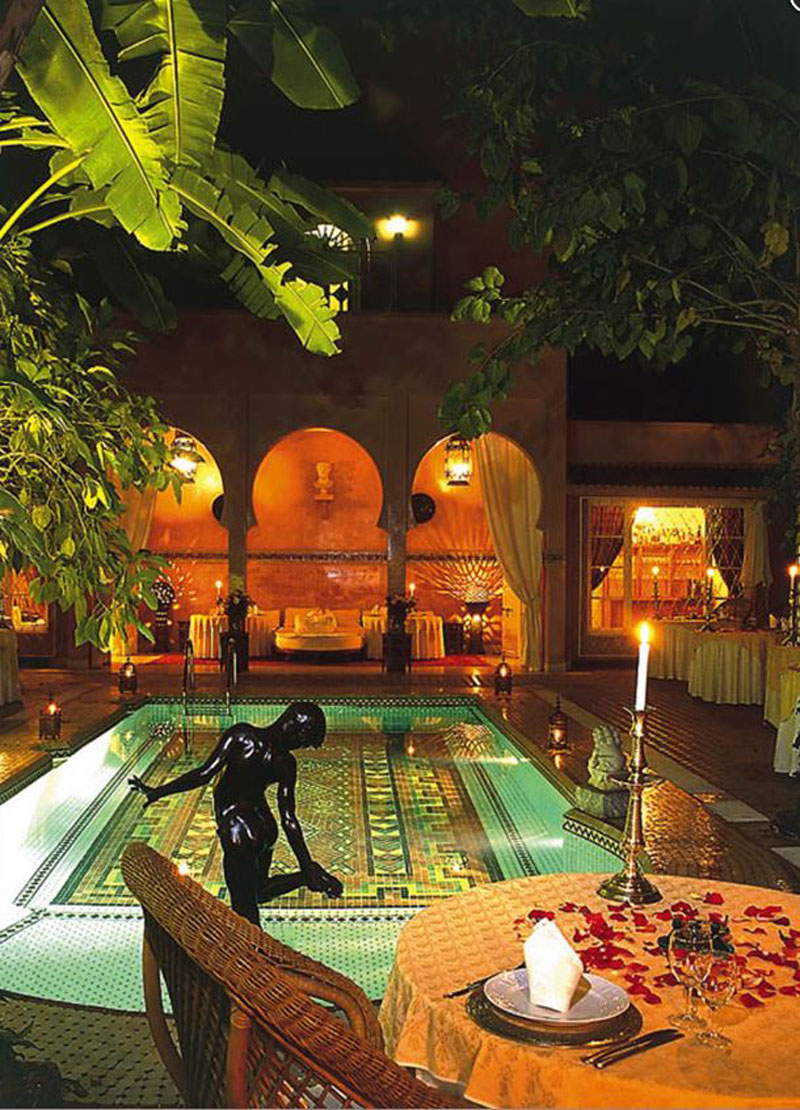
Delicious dining in stunning surroundings at the Dar Moha Restaurant.
Taste of Morocco Dar Moha
Moha Fedal set up his restaurant in a splendid turn-of-the-century riad in Marrakesh, which was once owned by the famous couturier Pierre Balmain. If looking for things to do in Morocco as a couple, this is your place! It immerses you in romance, with its lush garden in full bloom and tropical plants surrounding a perfectly lit mosaic pool. Dining at a candlelit table, you enjoy a musician playing the oud (a stringed instrument similar to a lute), impeccable service and Moroccan cuisine at its finest.
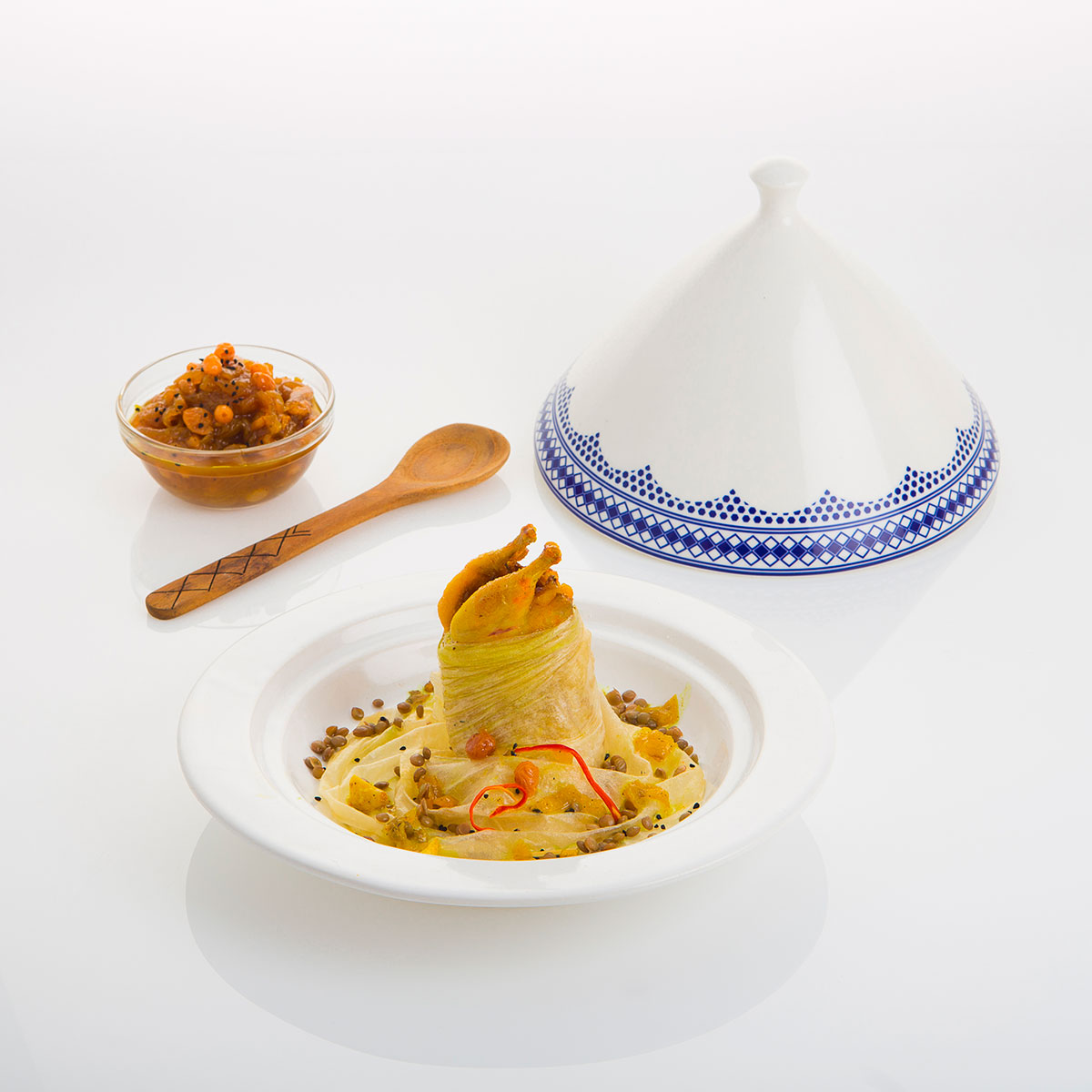
Picture Perfect Marrakesh Museum of Photography and Visual Arts
An inviting place even for those who don’t usually visit museums, this offers an intriguing visual insight into Morocco’s history and its many different cultures. Its collection of photographs, which date from 1870 to 1950, includes a rare, full-colour documentary shot in Morocco in 1957.
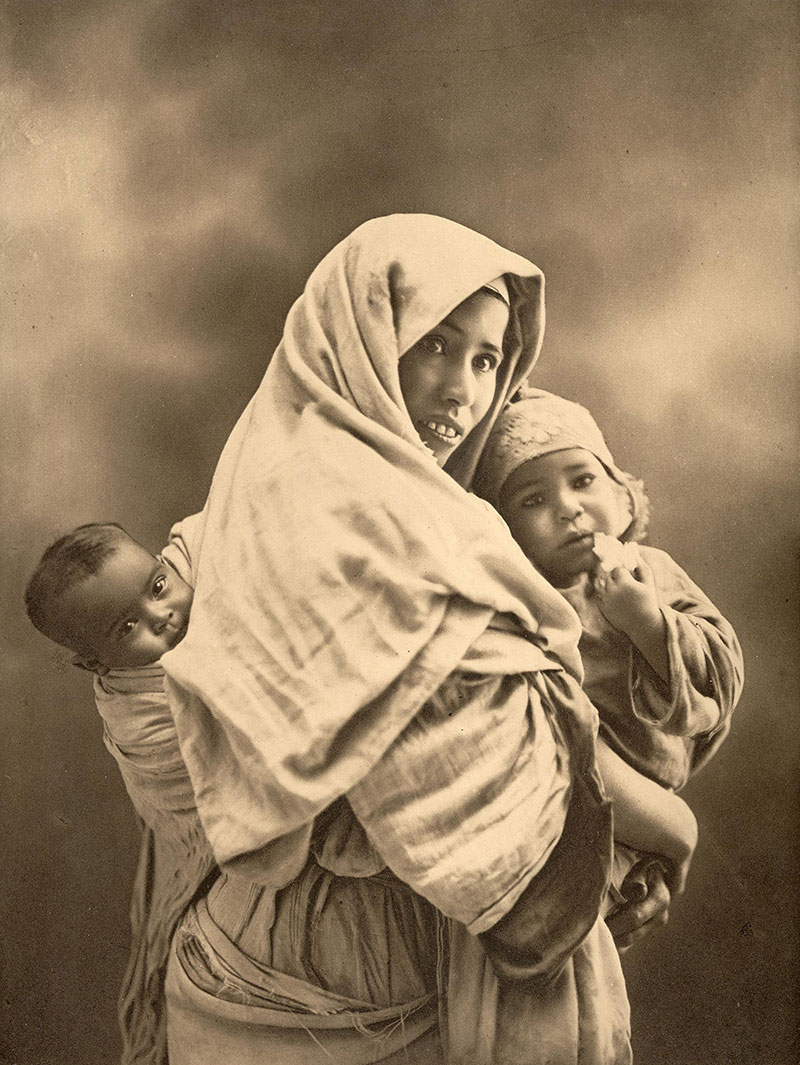
A Berber woman and her children taken around 1920, also at the Museum of Photography and Visual Arts
Moroccan Beauty Afous Argan
Berber women have been cultivating argan nuts for centuries and Afous Argan, a women’s co-operative, now produces and sells organic skincare and food products made from the nuts. Take home some edible argan oil (perfect for vinaigrettes), hamlou (an addictive spread made of ground almonds, honey and argan oil) and figue de barbarie (prickly pear) soap.
Cook’s Tour La Maison Arabe
La Maison Arabe’s famous cooking school has moved to an organic garden just outside the city, where fresh vegetables and herbs are grown. Workstations have closed circuit screens so every step is clear and delicious Moroccan flatbread is baked in the traditional wood-fired bread oven, known as tanourt. In the school’s large outdoor oven, a méchoui, or barbecue, can be organised with whole lambs pit-roasted to tender perfection making this a must amongst things to do in Morocco.
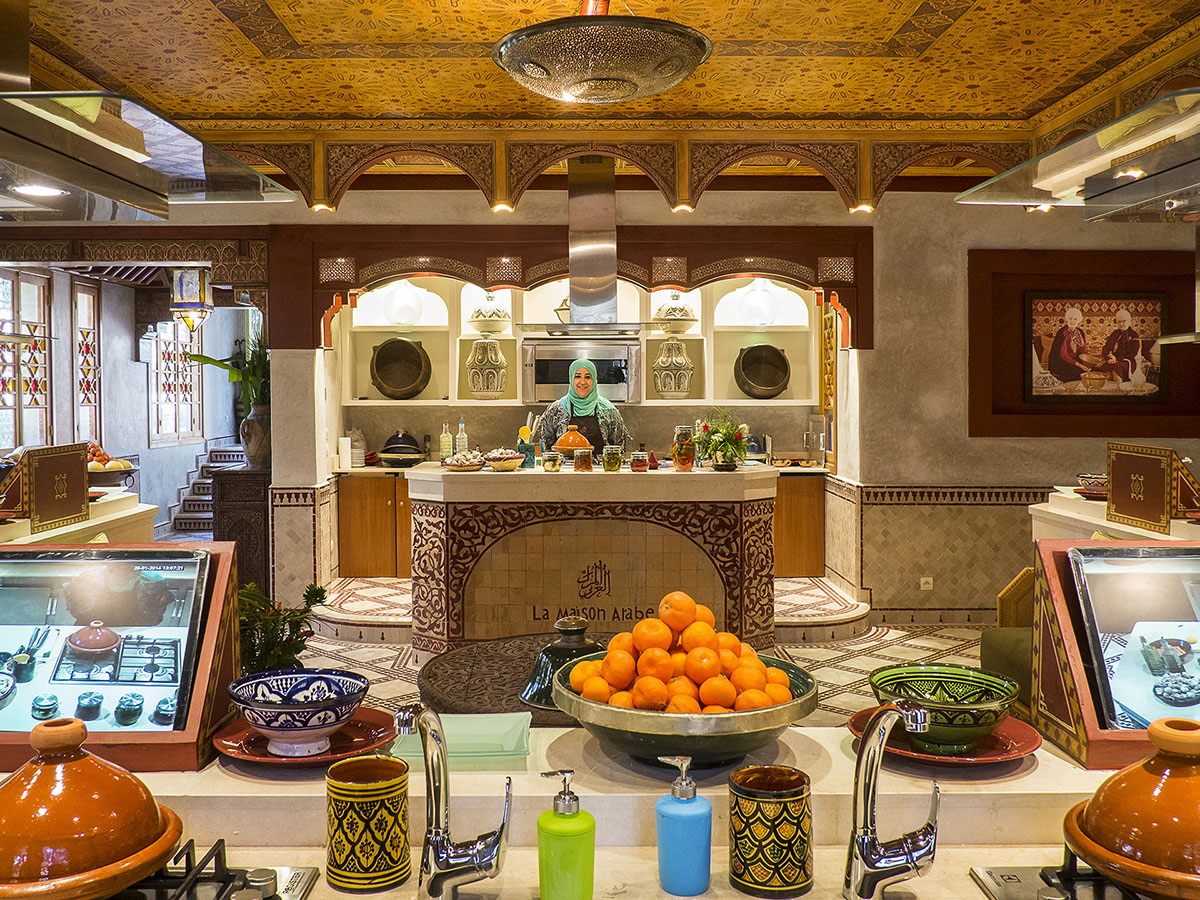
Learn to cook Moroccan style at La Maison Arabe just outside the city
Discover more magical locations to visit or contact us to plan your personalised itinerary today.


 Go back
Go back